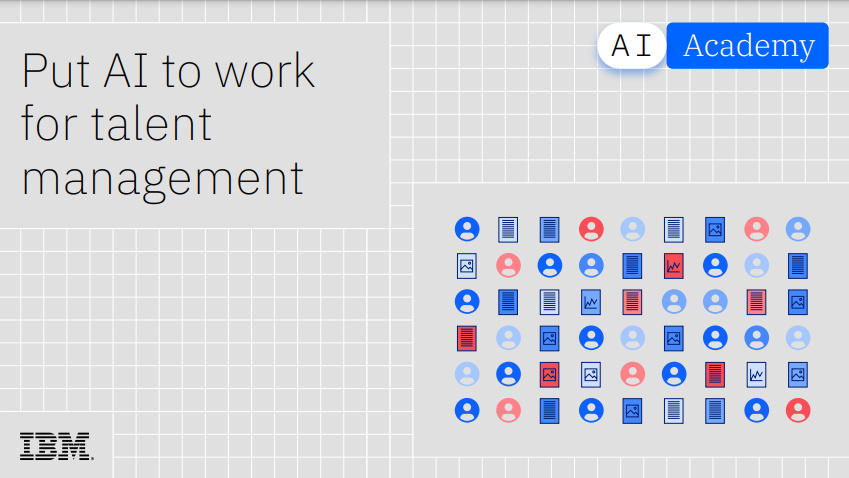What is a scrum master?
All the details you need to know about a scrum master's day-to-day work


A scrum master may sound like something out of a Marvel movie, but it is an important job in software development.
Scrum masters are integral parts of agile development. They are responsible for managing communication between team members to keep projects on track and the scrum framework is followed. “Servant leaders” as the Scrum Guide puts it. Scrum is a software development methodology embedded in self-organization and adaptability in line with agile principles.
The term scrum comes from the magnificent game of rugby. In rugby, the teams receive instructions from their coach, but in the game, the players must organize themselves as small units and quickly apply tactics. This is also what scrum, as a form of agile project management, is about: The goal is outlined, and there are many steps to be taken with small, flexible solutions on the way to success.
Like rugby players, product development teams huddled together at the start of each day in a scrum led by the scrum master. The scrum master asks team members three questions:
- “What did you do yesterday?”
- “What will you do today?”
- “Are there any impediments in your way?”
The scrum master leads the scrums, but they are not the project leader nor are they singularly responsible for project outcomes. They are more like a channel between product/line-of-business owners and development teams.
That doesn’t mean the job is easy. The scrum master also helps the team determine what it can achieve in a period or “sprint,” helps the team reach consensus, keeps the team focused and follows up on scrum rules, removes obstacles impeding team progress, and protects the team from outside distractions.
What are a scrum master’s responsibilities?
The scrum master has several responsibilities.
Get the ITPro daily newsletter
Sign up today and you will receive a free copy of our Future Focus 2025 report - the leading guidance on AI, cybersecurity and other IT challenges as per 700+ senior executives
Create project teams and best practices
The scrum master oversees creating and onboarding project teams. These teams are then provided with a vision of how the product should function. The scrum master also enables communication and information exchange between the project team and external groups. scrum masters also monitor project progress, provide feedback, and ensure there is an ethos of agility and knowledge.
Keep everyone informed and on track
The scrum master holds daily team meetings to get project progress updates, fix potential problems, and keep everything on track. They also hold regular sessions to inform product stakeholders about project progress. The scrum master’s key role is to keep the team meeting deadlines and getting results.
Lead Agile engineering practices
The scrum master promotes continuous integration (CI) and automation to enhance efficiency. Developers use these CI tools to incorporate portions of code into a central repository at regular intervals, from which automated builds and tests run in continual repetitions. This repeatable methodology decreases the risk, time, and work related to conventional development techniques.
How does a scrum master deal with others?
The scrum master cooperates with all team members and must deliver numerous services to the following people.
The scrum master’s relationship with the product owner
The product owner is typically a project's key stakeholder and has the vision of what needs to be built and a solid understanding of its users. The scrum master supports the product owner by:
- Finding ways to efficiently manage, arrange, and optimize the product backlog
- Ensuring that aims, scope, and wish list are correctly comprehended by every team member
- Helping create practical product planning in a complex environment
- Knowing and practicing agility and organizing scrum events as requested or needed
The scrum master’s relationship with the development team
The development team is those who do the work of building a product, including designers, writers, and programmers. The scrum master supports the development team by:
- Removing obstructions to the scrum team’s progress and performance
- Leading and coaching the team members in adopting scrum and using its methodology
- Helping the scrum team focus on creating high-value products
- Ensuring all scrum events happen and are kept positive, productive, and within a suitable time frame
The scrum master’s relationship with the organization
The scrum master supports the organization by:
- Leading, training, and coaching the organization in the successful adoption of the scrum methodology
- Taking part in implementing scrums within the organization
- Working with other scrum masters to increase scrum efficacy within the organization
- Eliminating barriers between stakeholders and scrum teams
The scrum process
Scrum has a clearly defined set of roles and ceremonies to follow, and the scrum master coordinates with each team member, guiding and coaching the team through the scrum framework.
The scrum process starts when one or more stakeholders need a product. The product requirements are then collected in a so-called product backlog — a summary or list of all product features the final product should include.
The product owner can adapt the product backlog during the project, so it’s a living artifact. When the developers have completed and developed all the requirements for the product from the product backlog, the product is, in the best case, finished and the product goal is achieved.
After completing the product backlog, the team begins sprint planning.
In sprint planning, the scrum team plans which product features from the product backlog they want to implement in the coming sprint. This subset of the product properties is then transferred to a sprint backlog, which includes all product properties to be implemented in the coming sprint and all requirements for the associated sprint goal.
The scrum master official certification
Scrum master is neither an apprenticeship nor a course of study. To become one, you must complete appropriate training courses where you’ll receive a scrum master certificate.
RELATED RESOURCE

DevOps: A view from the enterprise
What's driving DevOps, the impact of value stream management, and more
You must have several years of professional experience in project work and team management because agile product development proceeds differently than it does in theory.
Two organizations, Scrum Alliance and Scrum.org provide scrum training and certifications. These certification processes include deep dives into the scrum framework and the various team rules, events, and artifacts incorporated into agile development.
Scrum master certification courses are available, and they are requirements for scrum masters within some organizations. In organizations where they’re not required, having a certificate could help give you an edge over other applicants.
The abilities and characteristics of a scrum master
There are several characteristics and abilities good scrum masters should have.
Be knowledgeable
A good scrum master must be knowledgeable to be an effective team coach. They must understand the project’s technical issues and have good working knowledge of the business.
Most Scrum teams work in an economic context, so any knowledge of how an organization can act economically and what challenges it faces can be useful for the scrum master to highlight the advantages and consequences of Scrum more clearly.
Be collaborative
Scrum masters must be collaborative to ensure a culture of collaboration exists within the team they manage. Team members should be able to raise issues and be supported for doing so.
A scrum master must collaborate not just with their team but also the product owner and all other parties with stake in the project and business.
Be a good listener
Scrum masters must listen actively so they can react empathically and situationally to individuals or teams and identify difficulties and deviations regarding the scrum framework.
Be methodical
Scrum masters should know some prioritization techniques and methods for retrospectives so they can create an active and participatory framework. They should also have a basic understanding of time management, focus, and prioritization.
Rene Millman is a freelance writer and broadcaster who covers cybersecurity, AI, IoT, and the cloud. He also works as a contributing analyst at GigaOm and has previously worked as an analyst for Gartner covering the infrastructure market. He has made numerous television appearances to give his views and expertise on technology trends and companies that affect and shape our lives. You can follow Rene Millman on Twitter.
-
 Bigger salaries, more burnout: Is the CISO role in crisis?
Bigger salaries, more burnout: Is the CISO role in crisis?In-depth CISOs are more stressed than ever before – but why is this and what can be done?
By Kate O'Flaherty Published
-
 Cheap cyber crime kits can be bought on the dark web for less than $25
Cheap cyber crime kits can be bought on the dark web for less than $25News Research from NordVPN shows phishing kits are now widely available on the dark web and via messaging apps like Telegram, and are often selling for less than $25.
By Emma Woollacott Published
-
 Put AI to work for talent management
Put AI to work for talent managementWhitepaper Change the way we define jobs and the skills required to support business and employee needs
By ITPro Published
-
 More than a number: Your risk score explained
More than a number: Your risk score explainedWhitepaper Understanding risk score calculations
By ITPro Published
-
 Four data challenges holding back your video business
Four data challenges holding back your video businesswhitepaper Data-driven insights are key to making strategic business decisions that chart a winning route
By ITPro Published
-
 Creating a proactive, risk-aware defence in today's dynamic risk environment
Creating a proactive, risk-aware defence in today's dynamic risk environmentWhitepaper Agile risk management starts with a common language
By ITPro Published
-
 How to choose an HR system
How to choose an HR systemWhitepaper What IT leaders need to know
By ITPro Published
-
 Sustainability and TCO: Building a more power-efficient business
Sustainability and TCO: Building a more power-efficient businessWhitepaper Sustainable thinking is good for the planet and society, and your brand
By ITPro Published
-
 What is small data and why is it important?
What is small data and why is it important?In-depth Amid a deepening ocean of corporate information and business intelligence, it’s important to keep things manageable with small data
By Steve Cassidy Published
-
 Microsoft's stellar cloud performance bolsters growth amid revenue slump
Microsoft's stellar cloud performance bolsters growth amid revenue slumpNews The tech giant partly blames unstable exchange rates and increased energy costs for the slowdown
By Rory Bathgate Published